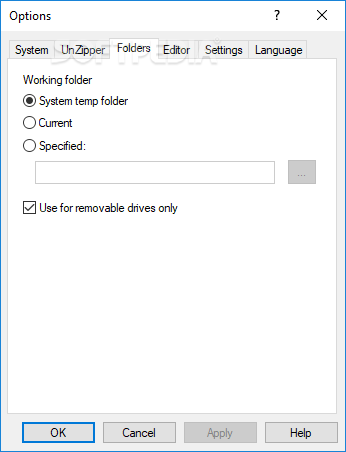

#UNZIPPER ONLINE ZIP#
namelist() to cycle through all the files in the zip and print their contents. This is expected, as they aren't strings - remember, we're reading a bytestream.


"The legacy urllib.urlopen function from Python 2.6 and earlier has been discontinued () corresponds to the old urllib2.urlopen.", Docs and this thread.Instead, I use io.BytesIO] 2, because we will be handling a bytestream - Docs, also this thread. There's no StringIO module in Python 3 (it's been moved to io.StringIO).# with open(("unzipped_and_read_" + contained_file + ".file"), "wb") as output:įor line in my_zip_file.open(contained_file).readlines(): With ZipFile(BytesIO(url.read())) as my_zip_file:įor contained_file in my_zip_file.namelist(): I'd like to offer an updated Python 3 version of Vishal's excellent answer, which was using Python 2, along with some explanation of the adaptations / changes, which may have been already mentioned. Pickle.dump(downloadedLog, open('downloaded.pickle', "wb" )) # file successfully downloaded and extracted store into local log and filesystem log Print "Saving extracted file to ",outputFilename If url in downloadedLog or os.path.isfile(outputFilename): # retrieve list of URLs from the webservers # remove entries older than 5 days (to maintain speed) # open logfile for downloaded data and save to local variableĭownloadedLog = pickle.load(open('downloaded.pickle')) # check for extraction directories existence Here is my current script which works but unfortunately has to write the files to disk. I would prefer not to actually write any of the zip or extracted files to disk if I could get away with it.
#UNZIPPER ONLINE ZIP FILE#
My primary goal is to download and extract the zip file and pass the contents (CSV data) via a TCP stream. I am now at a loss to achieve the next step. ZIP files from a URL and then proceeds to extract the ZIP files and writes them to disk. I have managed to get my first python script to work which downloads a list of. desktop application: Filezilla FTP, Cyberduck.
#UNZIPPER ONLINE SOFTWARE#
Out of the millions of FTP server exposed to the internet, the most popular server software are: On the many software available for FTP, some are harder to use than other ones.

FTP is a protocol, not an end-user application. In fact, FTP was created at a time where nobody could afford the hardware to run anything bulky. In 2020, there's still millions of FTP servers exposed to the internet and all popular FTP servers are still being actively maintained While it is true that FTP wasn't initially created with security in mind, the protocol got refined in 2005 to support TLS with RFC4217 Is FTP outdated?īeing invented 18 years before Time Berners Lee invented HTTP, FTP has passed the test of time. If we account only for the visible side of the iceberg, there are about as many FTP servers exposed to the internet as the entire population of Switzerland. The original specification of FTP was published the 16 April 1971 and was revisited several times in the 1980s, 1990s and 2000s.įTP is a means by which two machines can transfer files over a network. įTP was invented by Abhay Bhushan while he was a student at MIT. Example: Filezilla FTP, Filestash, Cyberduck. It is used to enable the sharing of files between different parties over a network.Īn FTP client is a software that can be used to access an FTP server. It has been defined in many different RFCs What is FTP used for?įTP is used to transfer files over a networkĪn FTP server is a server software that implements the FTP protocol (example: PureFTPd, bftpd, proFTPd, Filezilla server. FTP is a protocol that defines how two machines (known as the client and the server) can communicate over a network to transfer files.


 0 kommentar(er)
0 kommentar(er)
